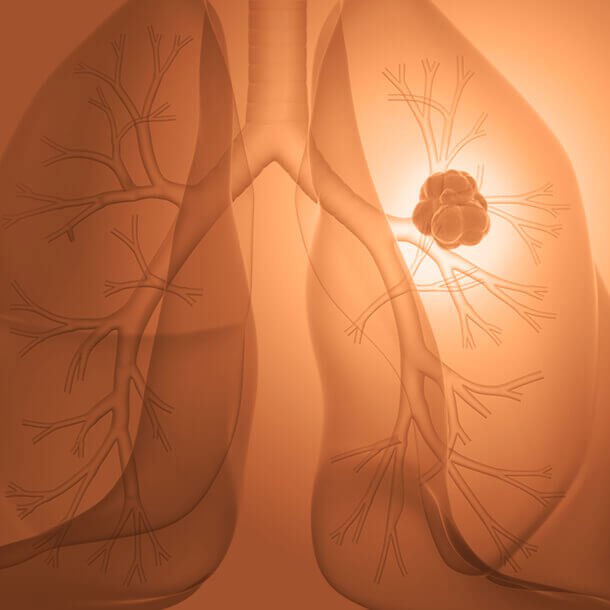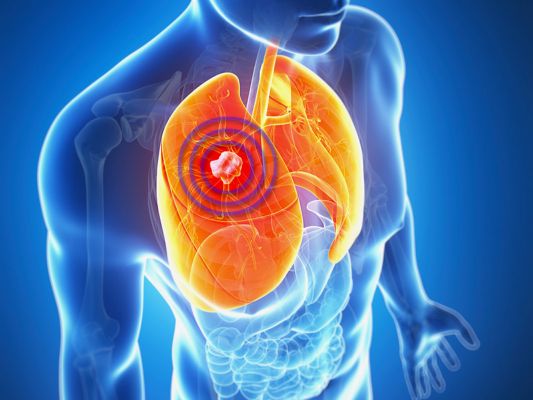Lung Cancer Symptoms Early are subtle but important to note, so that early treatment can seek out before it’s too late.
It is one of the most common cancers globally, and it’s also one of the deadliest. In addition, lung cancer kills more people than breast, prostate, colorectal or pancreatic cancer in America alone.
Lung Cancer Symptoms Early is an important indicator that something may be wrong with your lungs.
This post will go through each of the different types of lung cancer symptoms and additional information in detail.
How to spot the signs of lung cancer
Lung cancer is a very common type of cancer that can affect different age groups. It’s important to know the signs and symptoms. So you can seek treatment as soon as possible.
And, there are many ways people who have lung cancer stay healthy. This article will go over some of those tips!
Lung cancer is one of the most common forms of cancer globally, affecting people from all walks of life.
While many cancers require intense radiation or surgery to treat, lung cancer often responds well to early detection through screening tests such as CT scans or X-rays.

If detected early enough, this form of treatment may be all that’s required for a successful recovery from lung cancer.
However, if left untreated for too long, it will progress into more severe stages, and treatment with be far more difficult.
For that reason, it’s important to know the signs of lung cancer and seek out a diagnosis as soon as you experience any symptoms.
Keep an eye out for any persistent changes in your health since even small indicators can mean something is wrong and requires attention.
What are some common symptoms of lung cancer?
Lung cancer is the 2nd most common type of cancer in the world. It can be hard to know what symptoms are caused by lung cancer and which ones are not.
Common symptoms include:
- chest pain,
- shortness of breath,
- coughing up blood or sputum (a mixture of mucus, saliva and pus),
- fatigue/loss of energy,
- wheezing or labored breathing (it may sound like you’re trying to breathe through a straw) and
- weight loss.
These symptoms can also indicate other health problems, so it’s important to talk with your doctor if you have any concerns.
The best way to prevent lung cancer is by quitting smoking or staying away from secondhand smoke. Because it significantly increases your chance of developing the disease.
Why is it important to take notice of these signs and get help if you think you might have the disease?
Lung cancer is a disease that’s most prevalent among the older generations. It isn’t uncommon for many people to develop lung cancer after they’ve retired.
However, younger patients can also be diagnosed with lung cancer. There is no specific age group that it affects more than others.
For this reason, you should always express your concerns to your doctor. If you notice any changes in your health because cancer can affect anyone and everyone.
Lung cancer may be one of the deadliest forms of cancer. But it’s highly treatable if detected early and doesn’t require extensive surgery or dangerous radiation to combat.
This makes it important to stay on top of your health and report anything out of the ordinary to your doctor.
Besides quitting smoking, what else can you do to prevent lung cancer?
There are a lot of things that go into preventing cancer from developing in the first place. But there are steps you can take to treat this form of cancer if it’s been diagnosed.
Prevention includes limiting your exposure to secondhand smoke and avoiding prolonged unprotected exposure to sunlight. This is because they can cause mutations within your cells that may lead to cancer.
For lung cancer, the best prevention is quitting smoking or staying away from secondhand smoke. Since it’s one of the leading causes of this type of cancer.
Tips for how to prevent and manage this illness in your life?
Lung cancer is a very serious form of cancer. That can be difficult to treat if left untreated for too long.
If you have concerns, don’t hesitate to seek medical attention right away. So your doctor can run tests and determine the best treatment option to fight lung cancer.
Early detection is key to a successful recovery from lung cancer. So know the signs and report anything that seems abnormal in your health.
What is the difference between COPD and Lung Cancer (and what are their risks)
It’s important to know the difference between COPD and Lung Cancer because your risk for one or both diseases is based on your age, gender, family history, ethnicity and smoking habits.
The lungs are the vital organ that helps us breathe. They filter out impurities in our air so we can breathe clean oxygen into our bodies.

When the lungs are damaged by disease or other factors like smoking. They become less effective at filtering out impurities. That can lead to lung cancer or chronic obstructive pulmonary disease (COPD).
This blog post will discuss the difference between these two diseases and their risks depending on someone’s age, gender, ethnicity, and smoking habits.
When you have COPD, it means that your lungs are no longer able to function at full capacity due to an injury or illness.
They may lack the power to efficiently get rid of impurities in our air, leaving you feeling short of breath.
COPD affects an estimated 320 million people worldwide. It is the third leading cause of death in America and affects more people than breast cancer, diabetes, AIDS, pneumonia and influenza combined.
COPD doesn’t have any known causes, making it very difficult to determine who will develop it.
However, some factors are known to increase your risk of developing COPD, including being between 40 to 80.
Being a smoker or previously exposed to secondhand smoke, having a family history of COPD or lung cancer, being Caucasian or living in an industrialized country.
Lung Cancer is the leading cause of cancer-related deaths worldwide, and one in five men and one in six women are diagnosed with Lung cancer during their lifetimes.
Small cell lung cancer symptoms
Small cell lung cancer (SCLC) is a fast-growing and aggressive form of lung cancer. It represents about 20 per cent of all lung cancers and an even smaller percentage (about 10%) of non-small cell lung cancers.
This type of cancer typically spreads into lymph nodes quickly, often leading to symptoms or diagnoses within two years after the cancer is found.
Common symptoms of SCLC:
The following symptoms and signs may indicate that you have small cell lung cancer (SCLC):
- A persistent cough or hacking cough
- Chronic shortness of breath
- Severe chest pain caused by the tumour pressing on your heart or oesophagus
- A rapid increase in your weight (with no other causes like overeating)
- Hoarseness or chronic sore throat
- Repeated respiratory infections, including bronchitis, pneumonia or flu.
Lung Cancer is the leading cause of cancer-related deaths worldwide due to high rates of lung cancer that are directly correlated with smoking.
Even though there are only two types of lung cancer, non-small cell and small cell, each type can be divided into different stages depending on whether cancer has spread and the number of tumours there are.
The stage at diagnosis determines the likelihood of surviving lung cancer as well as your treatment options.
Treatment usually involves surgery if it is a localized form of cancer, chemotherapy to shrink the tumours before surgery, radiation therapy and targeted drug therapies depending on how extensive the disease is and what type you have.
Advanced lung cancer symptoms:
A person with advanced lung cancer can experience various symptoms before the disease progresses to later stages.
The following are some common manifestations:
- Coughing up blood Vomiting,
- nausea and loss of appetite
- Shortness of breath (dyspnea)
- Extreme fatigue and lack of energy or vigour
- Loss of weight due to poor appetite or from vomiting
- Difficulty breathing
- Wheezing and a tight feeling in the chest, especially when inspired (inhaling)
- Increased heart rate when breathing, especially at night
- Chest pain or discomfort
- Chronic bronchitis or pneumonia
- Weakness in the arms, legs, hands or feet.
Causes of COPD:
Cigarette smoking is the leading cause of COPD. Tobacco smoke contains irritants that can damage the lungs over time, including chemicals like cyanide and ammonia.
Other causes may include long-term exposure to air pollution, certain genetic factors or an autoimmune disorder.
According to the World Health Organization, more than 75 percent of deaths from COPD are related to smoking.
Risk factors for COPD include:
- Being a smoker or being exposed to secondhand smoke
- Having a family history of lung disease, especially emphysema or chronic bronchitis -Being between 40 and 80 years old
- Living or working around certain chemicals that can irritate the lungs, such as paint fumes, metal dust and chemical fumes
- Being Caucasian living in an industrialized country
- Being exposed to fumes from burning coal or oil for heat
- Having certain autoimmune diseases, including rheumatoid arthritis and lupus
People who have risk factors for COPD are at higher risk of developing the disease. For instance, if you smoke, quitting can reduce your lung function decline by 10 per cent to 15 per cent over five years.
Tobacco smoking:
Tobacco smoke contains irritants that can damage the lungs over time, including chemicals like cyanide and ammonia.
The most common symptoms of COPD are a chronic cough with sputum, shortness of breath and recurring respiratory infections.
There is no cure for COPD, but treatment can help manage symptoms and slow the progress of the disease.
People at higher risk:
People with a family history of lung diseases, such as COPD or alpha-1-antitrypsin deficiency. Those exposed to air pollution in smoggy cities. People who smoke cigarettes; and those exposed to hazardous fumes.
Treatment: COPD treatment focuses on managing symptoms and preventing complications like respiratory infections.
Options may include-
- medicines to open the airway,
- manage mucus production and reduce coughing;
- bronchodilators (drugs that widen the airways);
- antibiotics or antivirals for respiratory infections;
- oxygen therapy;
- pulmonary rehabilitation, which involves exercise training with help from a respiratory therapist; and
- lung reduction surgery.




















